We put the Chevy Equinox against the Toyota RAV4 in the battle of popular compact SUVs - here's the verdict
Both cars are fairly even in a lot of regards, but the Equinox LT is the better choice when it comes to performance and in-vehicle experience.

The Equinox came optioned with safety features like side blind zone alert, rear-cross traffic alert, and rear park assist. All the features work perfectly fine, but it's a shame they aren't standard at this point. There's also no advanced cruise control.
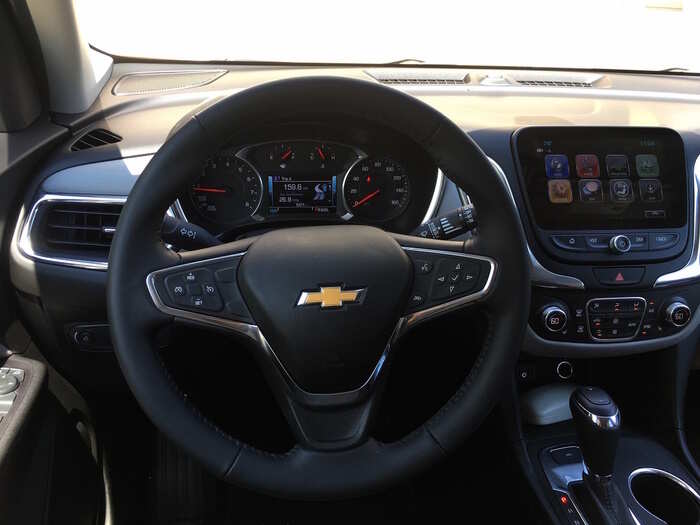
The Toyota has an advantage when it comes to standard safety features. All RAV4 models come with dynamic cruise control, pre-collision braking, lane-departure warning, and lane-keep assist.
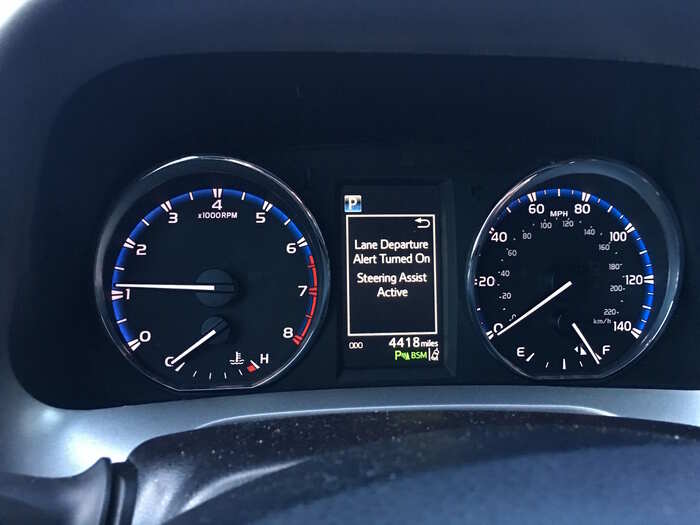
The RAV4 forces you to use Toyota's navigation system, which wasn't a very seamless driving experience. It didn't show different options or let you choose a faster route if one become available. If I missed a turn, it lagged when finding an alternative. My inability to default to Apple CarPlay or Android Auto felt like a big drawback.

You can get a better breakdown of the Toyota RAV4 navigation system here.
I'm not as partial to the RAV4 dash, which feels a bit more fussy. The touchscreen is surrounding by an array of knobs and buttons to control different features. And then there's the separate set of controls on the steering wheel. Put them all together and there's too much going on for a fairly simple set of commands.

The touchscreen supports Apple CarPlay, Android Auto, and SiriusXM Radio. A nice feature is a 4G WiFi hotspot, which functioned without any connectivity hiccups.
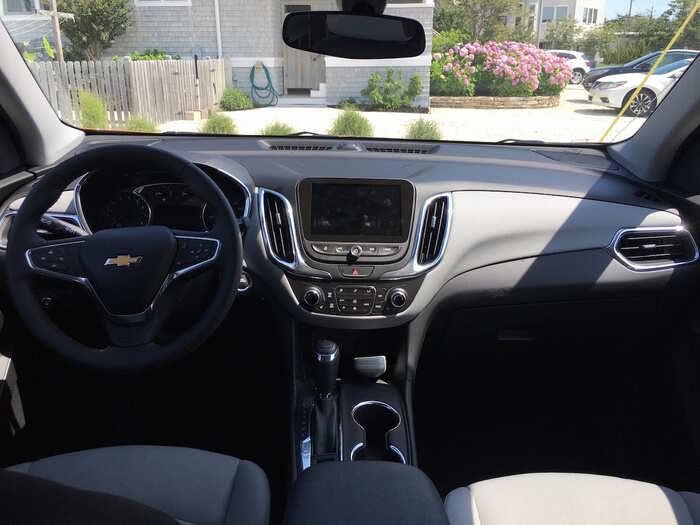
Where the Equinox starts to edge out the RAV4 slightly is from the driver's seat. It has a very clean dashboard with an 8-inch touchscreen that's refreshingly simple.
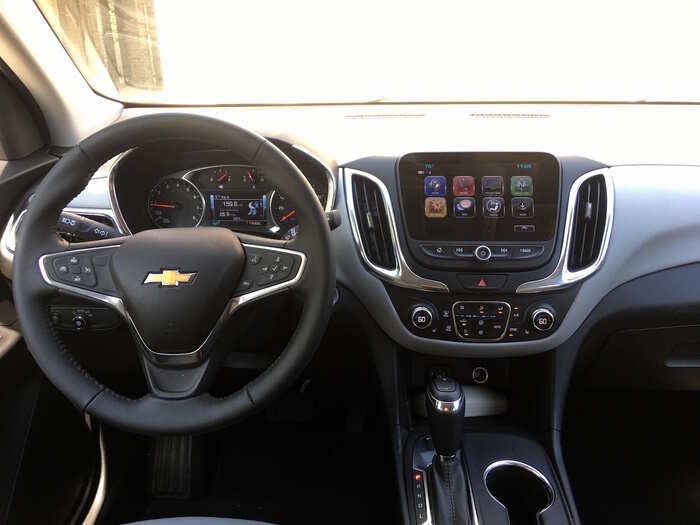
I'm a bit more partial to the Equinox's seats, which are very plush and cozy. But you're really not going to go wrong either way.
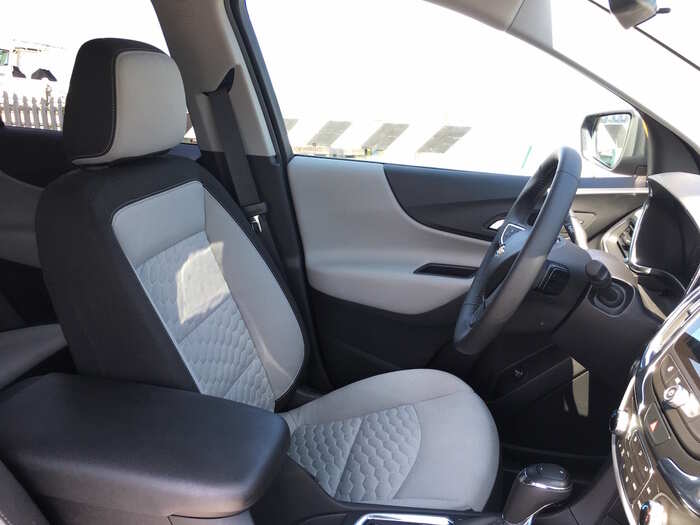
... and the Equinox has a good amount of space for most adults.
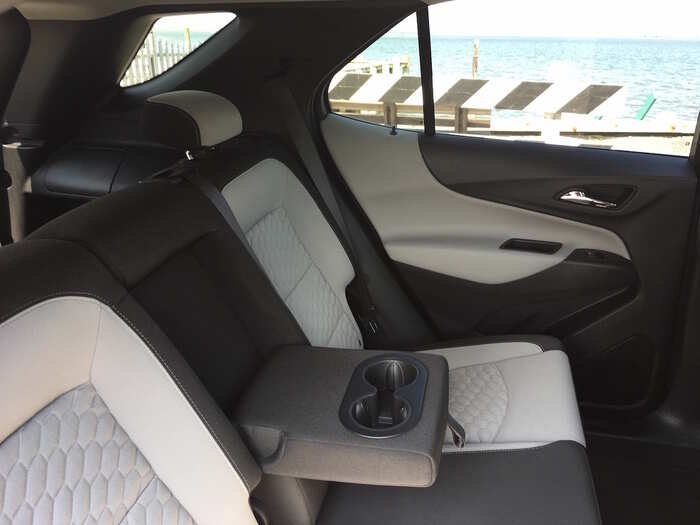
Both are equals when it comes to the passenger experience. The RAV4 comfortably seats five with quite a bit of legroom to spare ...
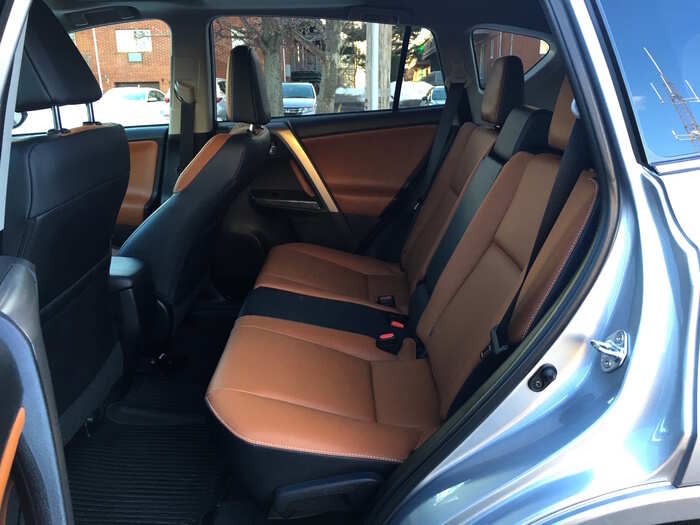
Without the 2.0-liter engine, you're not going to feel some massive difference between the two. These are still fairly large crossovers with decent acceleration times. The Equinox has a bit more verve once it does reach high speeds, but both of these SUVs fall short of the Honda CR-V's zip.

If you can spend extra for the 2.0-liter engine, the Equinox is definitely a better choice. Both don't provide official acceleration times, but the RAV4 Premier takes around 8 seconds to reach 60 mph while a 2.0-liter LT can get there in an impressive 6.7 seconds.

Estimates provided by Car and Driver.
The Equinox has a similar issue when it comes to acceleration, but had some inherent peppiness that was lacking in the RAV4. It was sometimes slow to catch up to speed on highways, but once you got it going, it flew just fine. I felt more comfortable changing lanes quickly or making sharp turns in the LT than I did in the RAV4. But these are small differences.

When I first drove the RAV4, my immediate reaction was that this is an SUV you keep in the middle lane at 65 mph. It's difficult to weave in and out of lanes in this car. It feels boxy and sluggish on a highway, and isn't too nimble on suburban roads either.
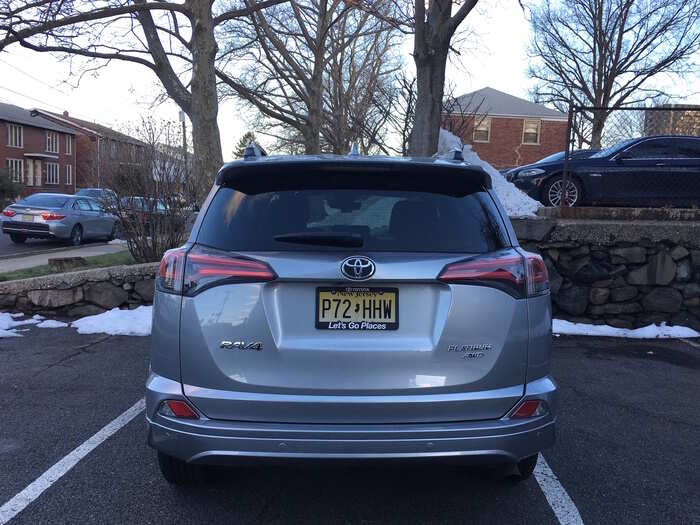
That being said, the Equinox still has more sheer power than the RAV4, even with a smaller engine size. The RAV4 cranks out 176 hp and 172 pound-feet of torque while the Equinox gets 170 hp and 203 lb.-ft. of torque.
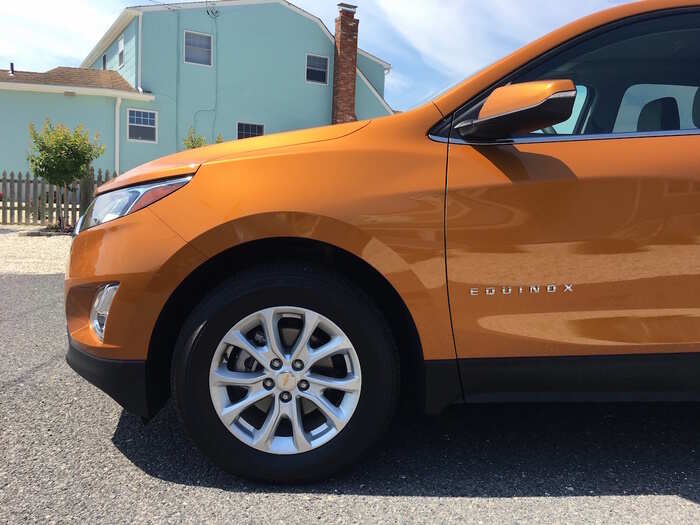
It's worth noting that Chevy is beginning to offer a 2.0-liter turbo engine with a nine-speed automatic transmission, and a diesel is on the way. So there are more powerful options in the works.
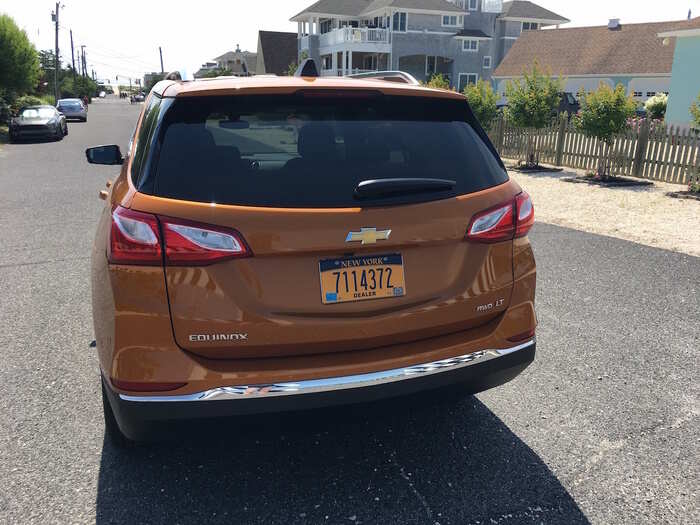
The RAV4 had a bigger engine (2.5-liter, 4-cylinder) than the Equinox. The trim came with all-wheel drive and a six-speed automatic transmission that can be kicked into manual mode. Like the Equinox, the RAV4 is supposed to get a combined 26 MPG.
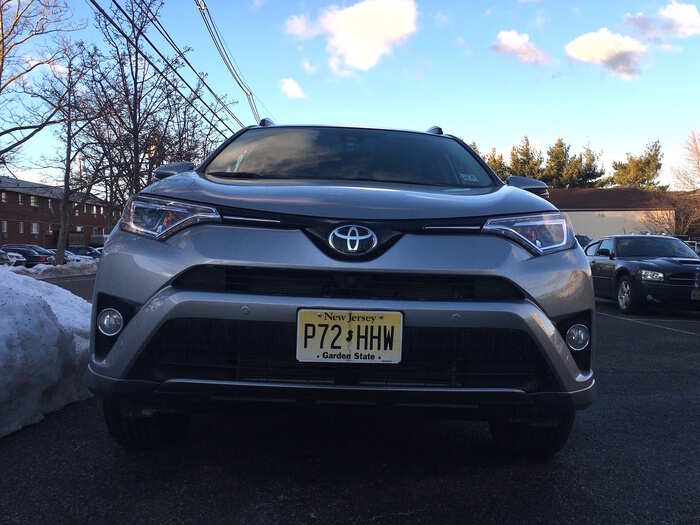
Now for a closer look at the cars themselves. As for the Chevy Equinox, we tested the 1.5-liter, 4-cylinder turbo engine with a six-speed automatic transmission and all-wheel drive. It's supposed to get a combined 26 miles per gallon
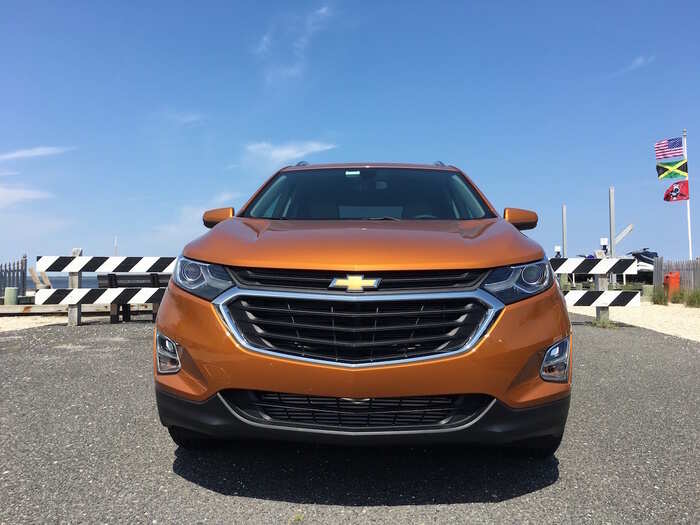
Comparatively, the RAV4 is a bit more boring. It doesn't have any details upfront that allow it to stand out from other SUVs. It's not an ugly SUV by any means, and the rear spoiler is a nice touch.
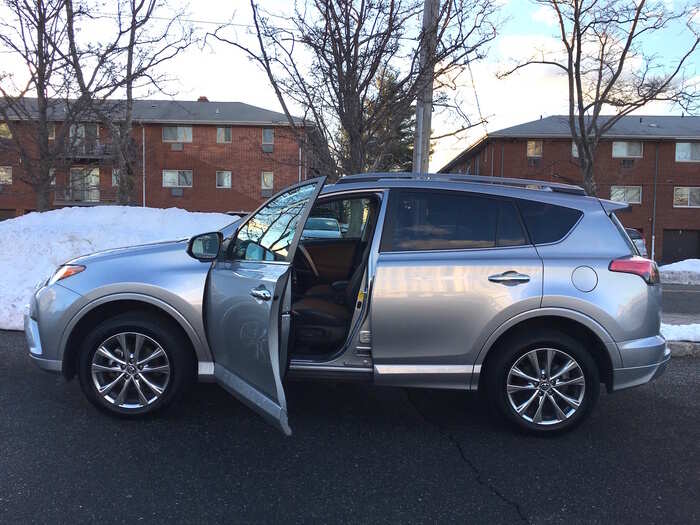
First, some basics. The Equinox isn't a bad-looking SUV. It has a prominent grille that isn't overly large, which gives it a bit of an edge. It's very no fuss without being totally devoid of intrigue.
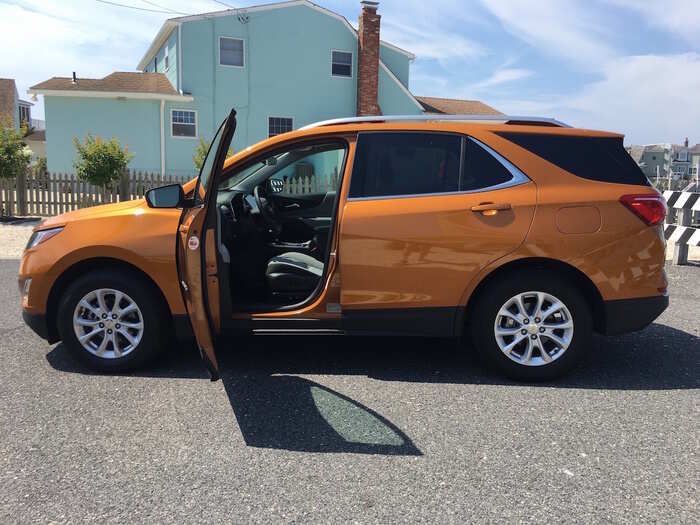
The LT starts at $28,500, but add-ons increased the final price tag to $33,730. The RAV4 starts at a lower price ($24,410) but the Premier model we drove costs $36,150.
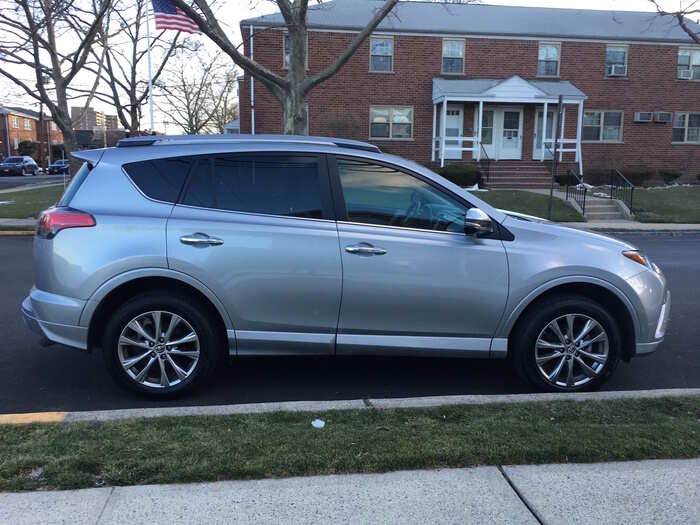
The Equinox Premier starts at $30,040.
The two SUVs are essentially equals when it comes to price. Unless you commit to the very base model, options that most find necessary will bump the price to the mid-$35,000 range.
As an initial note, the LT is not the most high-end Equinox available, while the RAV4 Premier is the most luxurious model on Toyota's crossover line. So there is a slight disadvantage there that we will be keeping in mind.
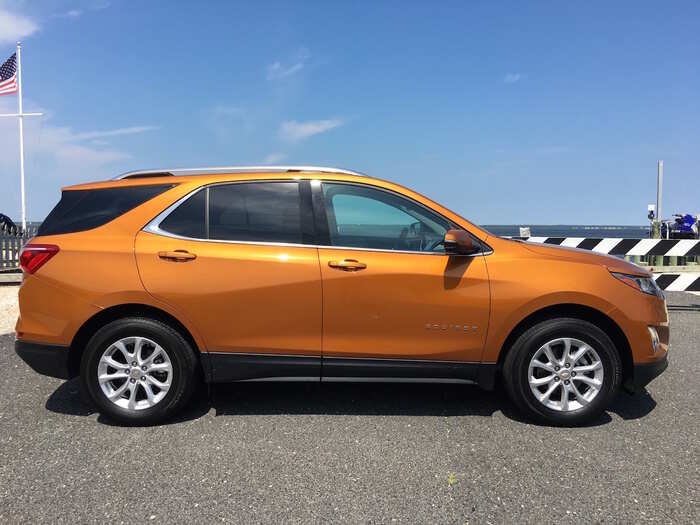
As a caveat, performance is the same across the Equinox line. We also drove an Equinox LT with two separate packages (the Confidence and Convenience Package and Sun and Infotainment Package) that come standard on the Premier trim.
The biggest disadvantage between the two would come down to some safety tech, such as lane-keep assist, that isn't made available on the LT. There's also slight differences when it comes to more luxe features, like heated steering wheels. We'll be making a note of this throughout the story.
Popular Right Now
Popular Keywords
Advertisement